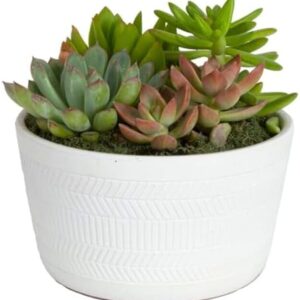Ever walked into a friend’s house and been blown away by their lush, green indoor jungle? Have you ever wished you could have a bit of that greenery in your own space? Well, good news – you absolutely can! Plant propagation with cuttings is a fun and rewarding way to expand your plant collection and unleash your green thumb.
But hold on, what exactly is plant propagation? Simply put, it’s the process of growing new plants from a variety of sources, including seeds, divisions, and cuttings. We’re going to focus on cuttings today because they’re one of the easiest and most popular ways to propagate plants.
So, how does it work? Essentially, you take a cutting from a healthy parent plant, encourage it to grow roots, and voila – you’ve got a new plant! Sounds pretty straightforward, right? It definitely can be, but there are a few key steps to follow to ensure success.
First things first, you’ll need to gather your supplies. You’ll need your parent plant, sharp scissors or pruners, a clean container with drainage holes, potting soil or a suitable rooting medium, and water. Make sure to choose a healthy and well-established plant for your cuttings – this will give you the best chance of success.
Next, identify a suitable stem to take your cutting from. Look for a healthy, non-flowering stem with several nodes (the points where leaves, buds, and branches grow from). Nodes are where roots will develop, so having multiple nodes increases your chances of success.
Using your sharp scissors or pruners, make a clean cut just below a node. Aim for a cutting that is 4-6 inches long – this will give you a good balance of stem to support growth and nodes for root development. Remove any leaves from the bottom half of the cutting to reduce moisture loss and encourage root growth.
Once you have your cutting, it’s time to prepare it for rooting. Dip the cut end of the stem into water and then into a rooting hormone powder. Rooting hormone helps stimulate root development and can improve your chances of success. It’s not strictly necessary, but can be a helpful boost, especially for harder to root plants.
Now, it’s time to plant your cutting. Fill your clean container with potting soil or a suitable rooting medium – perlite, vermiculite, or a mix of the two can work well. Make a hole in the soil with a pencil or finger and gently insert the cutting, making sure the nodes are covered. Firm the soil around the cutting to provide support and moisture.
Lastly, water your cutting thoroughly and place it in a warm, bright location. Provide indirect light to prevent scorching, but avoid placing your cutting in full sun. Keep the soil consistently moist but not waterlogged, as too much water can cause rot. A clear plastic bag or a humidity dome can help maintain high humidity levels, which can improve rooting success.
Now, all you have to do is wait! Check your cutting regularly for signs of new growth and root development. Depending on the plant species, rooting can take anywhere from a few weeks to a few months. Be patient and don’t be discouraged if your cutting doesn’t root right away – some plants are just slower to establish.
Once your cutting has rooted and established new growth, you can transplant it into a larger container with regular potting soil. Treat it like you would any other houseplant, providing appropriate light, water, and nutrients. Congratulations, you’re now the proud parent of a new plant!
Plant propagation with cuttings is a fun and rewarding way to expand your plant collection and unleash your green thumb. It’s a great way to save money, experiment with new plant species, and share your love of plants with friends and family. So why not give it a try? Grab your scissors, choose a healthy plant, and get propagating! You’ll be amazed at how quickly you can turn one plant into many. Happy gardening!






